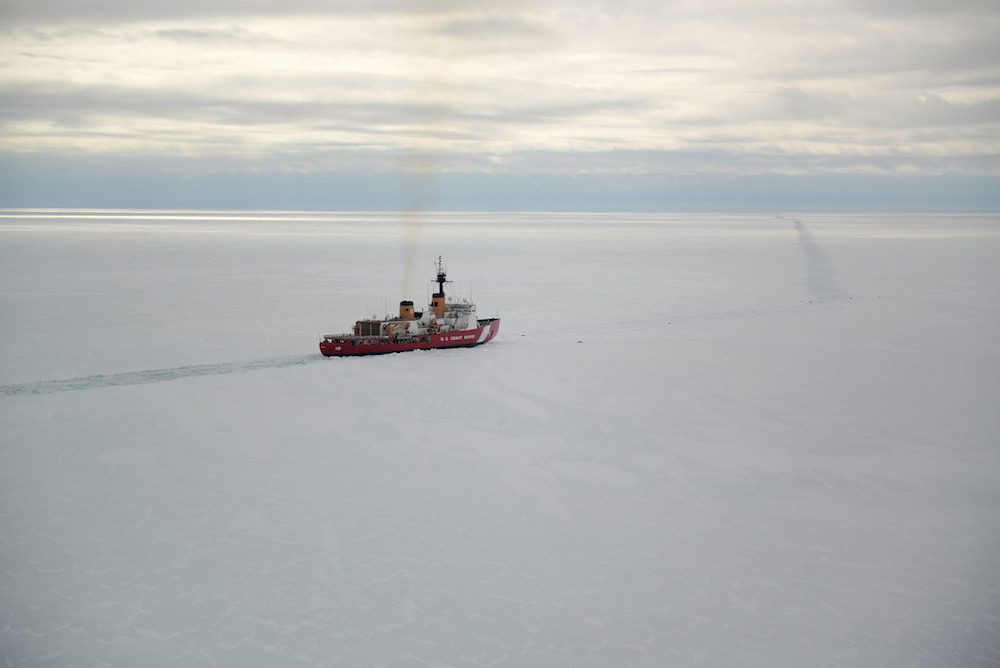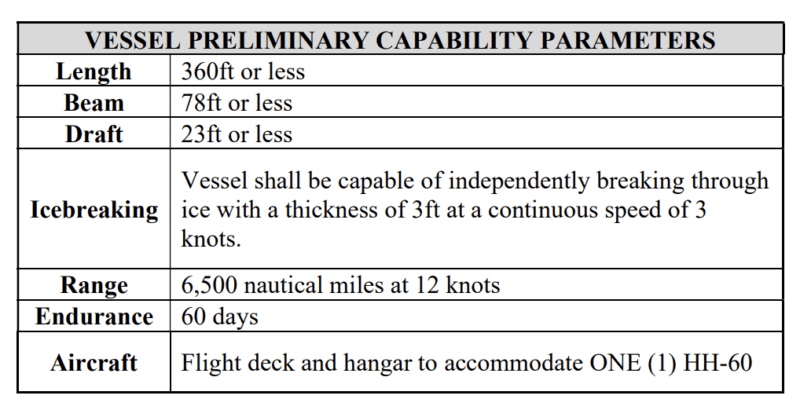President Trump Unveils ‘Trump-Class’ Battleships
President Donald Trump announced Monday the creation of a new battleship class for the U.S. Navy, marking an unexpected return to a vessel type that last saw construction nearly eight...

The Coast Guard Cutter Polar Star (WAGB-10) and crew create a navigable channel through the frozen Ross Sea off of Antarctica, Jan. 16, 2017. The 399-foot icebreaker is the Coast Guard’s only operational heavy icebreaker capable of conducting Antarctic icebreaking operations. (U.S. Coast Guard photo by Chief Petty Officer David Mosley)
The U.S. Coast Guard has published a Request for Information (RFI) seeking input for construction of a medium-size icebreaker in just three years. The RFI is addressed to both U.S. and international shipyards highlighting the recent efforts to collaborate with Arctic partners in Canada and Finland as part of the newly established ICE Pact.
The goal of the request is to broaden the USCG’s understanding about existing vessel designs and shipyard capabilities that could start construction of a mid-size icebreaker within twelve months and launch it within 36 months. This may be a tall order for U.S.-based shipyards, though shipyards in Finland routinely build and deliver icebreaking vessels in such a time frame. The note calls for information on the engineering, procurement and construction of up to three vessels of this type.
The Coast Guard’s RFI, published late last week, continues the recent push by the U.S. to expand its limited Arctic capabilities in the face of greater Russian and Chinese activity in the region.
Last month the Federal Maritime Commission initiated an investigation of global maritime chokepoints, including the Arctic’s Northern Sea Route. It described the Arctic waters as potentially able to reshape global trade patterns and highlighted their growing strategic importance due to increased military activity from Russia and China.
In addition, last week’s Executive Order to strengthen the U.S. maritime sector also prominently featured mention of the Arctic region. The EO called for the development of a strategy to “secure Arctic waterways.”
It remains to be seen if this increase in policy interest translates into concrete budgetary investments to enhance the USCG’s Arctic capabilities. Thus far only a single heavy icebreaker, also known as the Polar Security Cutter, currently under construction at Bollinger Shipyards in Mississippi, has been fully funded. The vessel’s construction from first steel cutting in 2023 to completion will likely take 7-8 years.
The RFI refers to the new icebreakers as the Arctic Security Cutter. This type of icebreaker would complement the larger and more capable Polar Security Cutter the Coast Guard and its partners have been developing for much of the past decade. In total the agency has repeatedly stated that it will require 8-9 vessels to ensure year-round access to the Arctic, consisting of three heavy icebreakers and 5-6 medium icebreakers.

The new RFI seeks information about a medium-size and endurance icebreaker up to 360 ft long, 78 ft wide, and with a draft of no more than 23 ft. Its proposed range and icebreaking capabilities are modest with 6,500 nautical miles and 3 feet of ice at 3 knots. In comparison the USCG’s current medium icebreaker Healy, significantly larger and more capable, has an range of 16,000 nautical miles with the ability to pass through 4.5 feet continuously.
Based on the proposed capabilities the Arctic Security Cutter will likely function as an ice-capable patrol vessel navigating in first-year ice during the spring, summer and fall.

Sign up for gCaptain’s newsletter and never miss an update

Subscribe to gCaptain Daily and stay informed with the latest global maritime and offshore news
Essential news coupled with the finest maritime content sourced from across the globe.
Sign Up